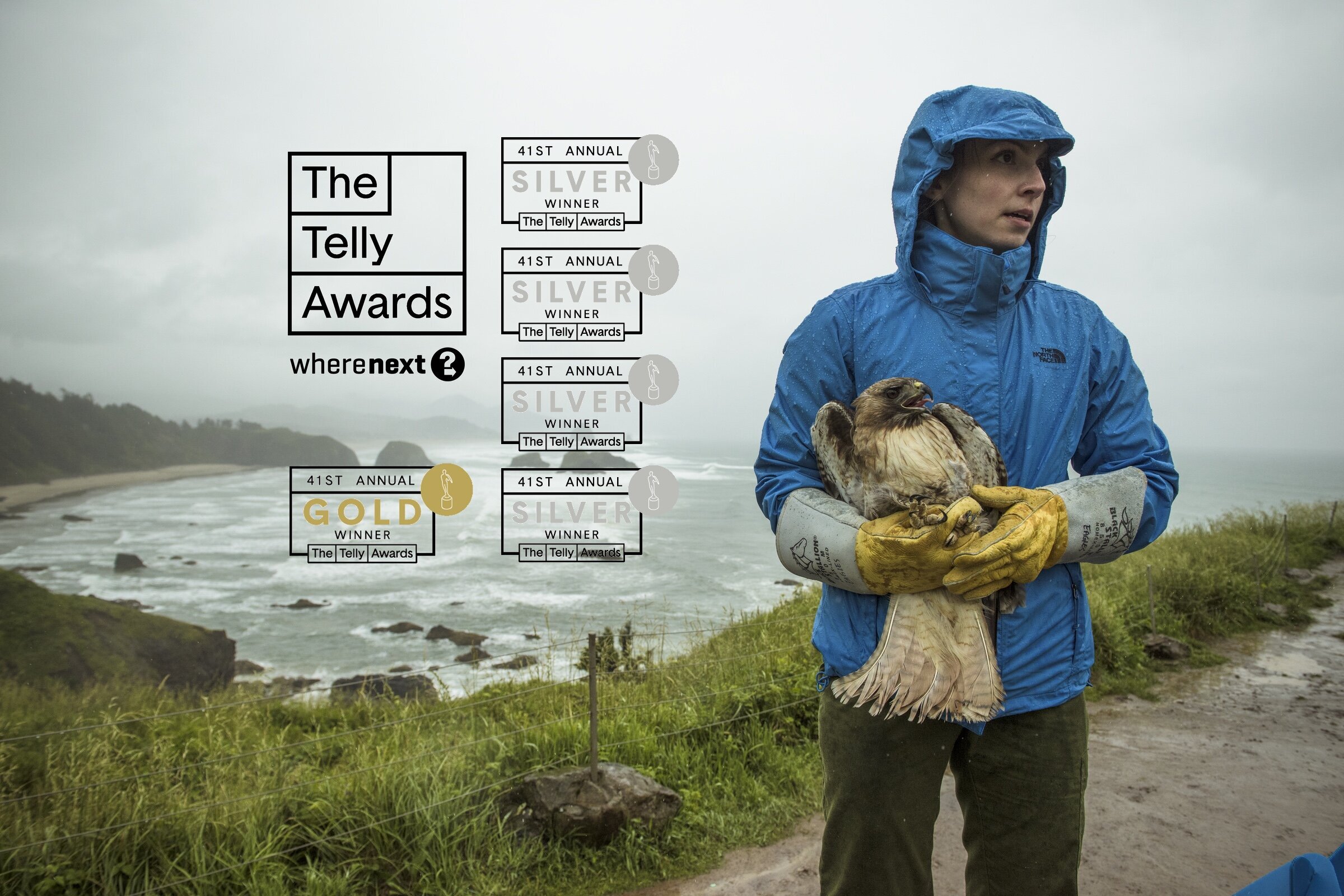Discovering the Value of a Wild Heartbeat With Cat Footwear
Producing a Brand-Driven Social Impact Film
Client: Cat Footwear
Filming Location: Astoria, Oregon
Our US storytelling agency team went on assignment with Cat Footwear in Oregon to film what became a Telly Award-winning film.
For 23 years, the Wildlife Center of the North Coast has been rescuing and rehabilitating injured, sick, orphaned and displaced native wildlife on the Oregon coast. Their goal is to release healthy animals back into their native habitat, and although they specialize in seabird rehabilitation, the Center receives such diverse species as hawks, songbirds, and mammals. The Center relies entirely on public donations and the dedication of a small team of staff and volunteers to care for over 2,000 animal patients every year.
Filmmaker and one of the protagonists of our documentary series, 'The Birders,' Morgan Heim, first introduced us to the Wildlife Center and their significant work. Our client, Cat Footwear, had tasked our visual storytelling agency with finding a suitable location to shoot a documentary film in support of the release of their brand new product, Stormers. These are a new line of progressive rubber boots, engineered for people who live and work in the wet outdoors.
The Wildlife Center’s Rehabilitation Coordinator Pauline Baker giving some love to a new arrival
There's almost nowhere wetter than the northern coast of Oregon, and the staff of the Center spends most of their time traipsing through thick mud, frantically corralling gangs of escaped ducklings, or rescuing injured seabirds from rain-lashed, rocky beaches. The fact that they do all of it for nothing more than the love of animals sealed the deal. Cat wanted to support the sort of people who inspired this line of boots, and the team of the Wildlife Center is about as inspirational and rough and ready as it gets.
We asked Morgan to present the documentary. Beyond her undeniable passion for wildlife, she is a Pacific Northwest native, a Senior Fellow of the International League of Conservation Photographers, and a fervent advocate of the Center's work. Additionally, Cat provided boots for the staff and team of volunteers and donated US$5000 to the Wildlife Center to support its mission to protect and rehabilitate wildlife.
This Double-crested Cormorant is an example of the seabirds that regularly find themselves being cared for at the Wildlife Center. We obtained some wonderful footage of this bird gracefully swimming underwater in its tank.
Conditions at the Wildlife Center are wet and muddy: perfect for road-testing muck boots, but not ideal for time-sensitive video production! The volunteers also had to go about their daily tasks during the shoot. Hungry, traumatized, and vulnerable animals require constant feeding, often delicate care, and their medical treatments can't wait. It was necessary to plan our filming schedule around the volunteers and their activities. The volunteers also don't operate on a fixed schedule; at any moment, they may receive a call about an injured animal, or a new species may arrive at the Center in need of medical attention.
We filmed as unobtrusively and respectfully as possible. Adhering to a strict production schedule was more or less impossible. We improvised and went with the flow. As you can see in the finished documentary, a typical day for a volunteer at the Center involves incessant feeding sessions, periodic poop-patrols, and sackloads of laundry. And this all takes place in a wet and misty cloud of Pacific Northwest fog. These conditions showed off the unique attributes of Stormers. No one needs boots like these more than the hands-on volunteers at the Wildlife Center of the North Coast. Stormers were also an absolute necessity for our videographers as they shadowed the volunteers, traipsing through the same thick mud and sodden grass.
Josh Saranpaa, the Executive Director of the Wildlife Center
The protagonist of "The Value of a Wild Heartbeat" is the Center's Executive Director, Joshua Saranpaa. The moment we heard Josh's inspiring story, we knew that he had to be the central focus of this project. Josh started as a volunteer at the Wildlife Center during the summer between his sophomore and junior year at high school in 2008. He was just 16 years old. By 2010, he was a fully trained wildlife rehabilitator and working as the Center's Assistant Director, on a purely voluntary basis.
When the Center's founder and Josh's mentor, Sharnelle Fee, tragically passed away in 2015, Josh was appointed Executive Director at the tender age of just 23. As Morgan put it in the video: "He's ambitious and optimistic, and just totally in love with what he does." That deep passion for nature is the driving force of the Center, and it's what kept Josh going through the hard times when the survival of his second-home was hanging by a thread.
"The Value of a Wild Heartbeat" is a tribute to the unsung heroes of conservation and animal welfare. We've all seen those cute social media videos of a rescued animal beginning a new life. We smile, leave our 'like' on the post, and go about our day. But somewhere out there in the wind and rain, someone is selflessly rescuing and rehabilitating those animals, feeding them multiple times a day, cleaning up their mess, and refusing to give up on them when all hope seems lost. Those people are usually doing it for no money.
These are the people we wanted to celebrate with this project: those people who do a messy and unglamorous job simply because they believe with every fiber of their being that every wild heartbeat is valuable. Josh said it best in the finished documentary: "I don't think I'm any more deserving of a heartbeat than the robin that comes in, caught by a cat."
Cat Stormers on display as a volunteer feeds a fish to a double-crested cormorant.

















What happens when communities see forests, rivers, and wildlife as part of their family? Parientes explores that question through a series of short films and podcasts created with WWF in Colombia’s eastern plains. It’s a story of conservation, connection, and a reflection of why we believe in content with soul, crafted to last as an evergreen resource for years to come.